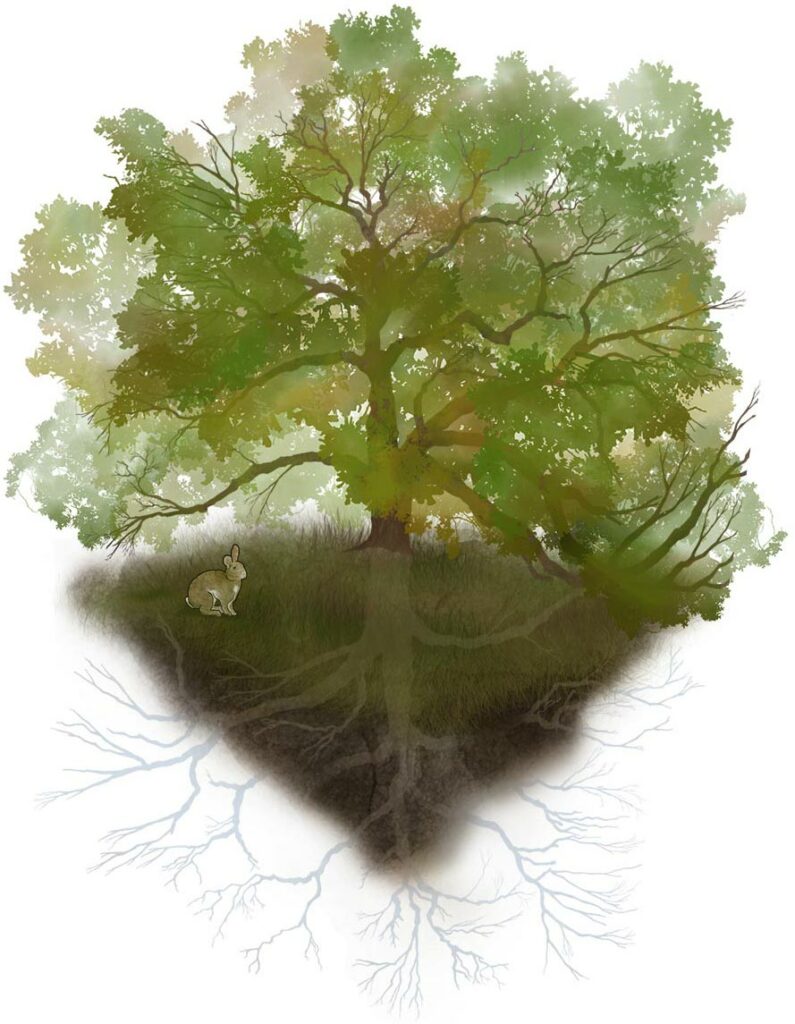Resources for Adults
Below are some questions a child may ask after hearing or reading “Lola and the Tree of Life,” along with possible answers. For more helpful, age-appropriate guidelines for talking with a child about death, visit these online resources. Consider using our coloring pages and word search on our Fun for Kids page to help engage the child.
In general, when discussing death with a child, be as direct as possible (for example, say “died,” not “passed away” or “went away”) and use words your child will understand. If the child asks a question you don’t have a clear answer to, don’t be afraid to say, “I’m not sure about that.” When possible, add something reassuring, for example, “But here’s something I do know for sure…”
“Lola and the Tree of Life” is a spiritual, but not religious, book. If your child has been exposed to religious concepts, this general approach will allow you to bring in religious beliefs (yours and those of others, using age-appropriate language) as you engage in conversations about the story.
Questions and Possible Answers
He is very sick and needs special care.
She knows he may die. She will miss him.
No. When her grandpa dies, she won’t be able to see him again. But Lola will always have her memories of her grandpa. Everything he taught her and the good times they had will be part of her.
Yes, but probably not very soon. Tree understands this. When Tree dies, Tree’s leaves, bark, trunk and branches will all provide food for plants, animals, insects and the earth. Tree also will leave behind many, many other trees that sprouted from her seeds.
Yes. It’s what happens when a living thing reaches the end of its life and its body can’t go on. (Share an example the child will understand without trauma. For example: “Remember when your friend Danny’s dog Elmo died? That was because Elmo’s body became old and sick.”) When people, pets and even trees die, it’s normal to miss them—and also to remember the times we shared. We can continue to think of them in our minds and feel love for them in our hearts.
Scientists have learned that trees can talk to each other through their roots and smells they send to each other. Some people say they can communicate with trees in their own way! Lola is one of those people.
After reading Lola and the Tree of Life to, or with, a child, consider using some of the following questions to help the child understand what happens in the book and relate it to their own life.
- Was there anything in this book you didn’t understand?
- What was upsetting Lola?
- Why do you think Lola feels better when she’s with Tree?
- What did Lola learn from Tree during her visit?
- What did you learn from Lola, Skye and Tree?
- Lola’s grandpa Poppy is sick like [fill in a loved one or pet who is sick]. What do you think Tree would say to you about that?
- What does this book make you think about?

Additional Resources
Talking with Children About Death
“Lola and the Tree of Life” is designed to help adults prepare children for the death of a loved one or pet. These online resources also focus on guidance for adults who want to help children understand death and cope when a death occurs in their lives.
Child Development Institute – childdevelopmentinfo.com
Talking to Kids about Death
Psychology Today – psychologytoday.com
The Dos and Don’ts of Talking to a Child about Death
Parents.com – parents.com
Talking to Kids about Death
Child Mind® Institute – childmind.org
Helping Children Cope with Grief
Exploring Tree Communication
“Lola and the Tree of Life” suggests trees talk. We may not be able to hear them, but they really are communicating! The following resources offer insights into that amazing phenomenon.
TED Talk June 2016
How Trees Talk to Each Other
Suzanne Simard
“A forest is much more than what you see,” says ecologist Suzanne Simard. Her 30 years of research in Canadian forests have led to an astounding discovery — trees talk, often and over vast distances. Learn more about the harmonious yet complicated social lives of trees and prepare to see the natural world with new eyes.
Suzanne has since written a New York Times bestselling memoir, “Finding the Mother Tree,” that skillfully interweaves the story of trees with her own to help us all better understand who we are and our place in the world.
TED-Ed Talk June 2019
The secret language of trees
Camille Defrenne and Suzanne Simard
Most of the forest lives in the shadow of the giants that make up the highest canopy. These are the oldest trees, with hundreds of children and grandchildren. They check in with their neighbors, share food, supplies and wisdom gained over their lives, all while rooted in place. How do they do this? Camille Defrenne and Suzanne Simard explore the vast root system and intricate communication of trees using a child friendly, animated approach.
The Hidden Life of Trees
https://www.wohllebens-waldakademie.de/
Peter Wohlleben
In his international bestseller “The Hidden Life of Trees,” Peter Wohlleben opened readers’ eyes to the amazing processes at work in forests every day. Then came his breathtakingly illustrated edition that brought those wonders to life like never before. Now his observations have been made into a stunning documentary film by the same name, directed by Jörg Adolph.
Both books are available new and used online and in bookstores. The documentary, released in theatres in 2021, may be rented or purchased through Amazon Prime video, Google Play, Microsoft, Apple TV and YouTube.

